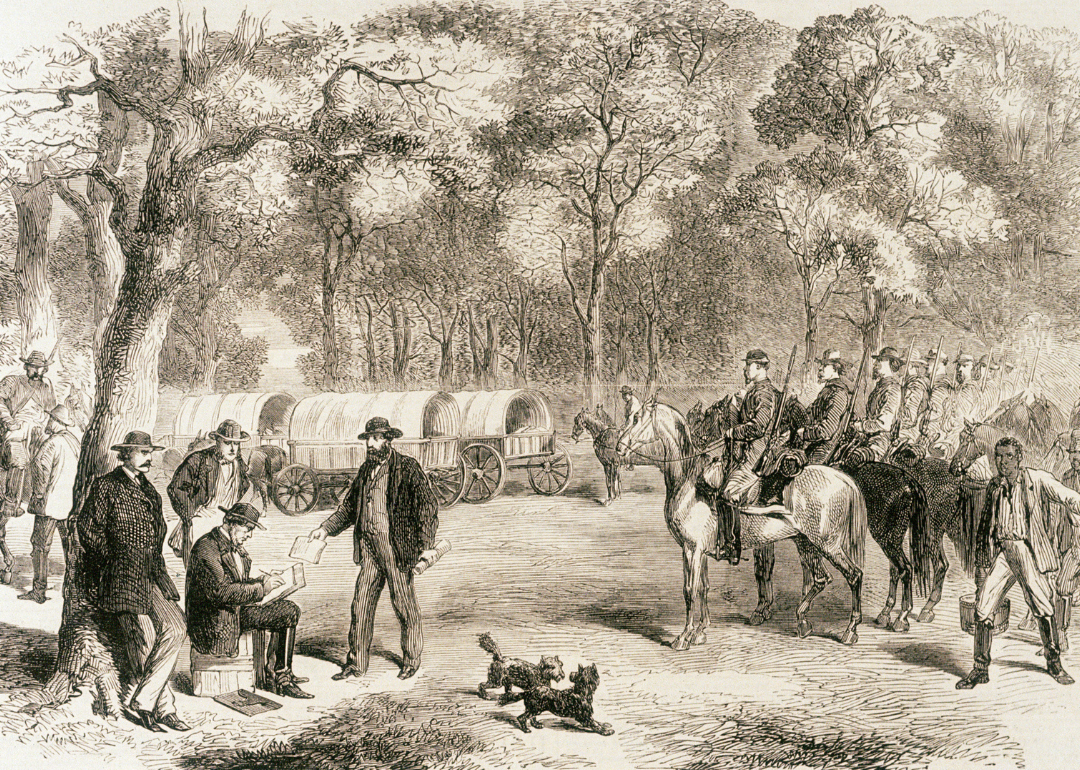Bettmann // Getty Images Throughout the early 1860s, the Northern and Southern states held sustained disagreements on several key issues, including economic policies, cultural values, the power and reach of the federal government, and slavery. The latter issue was of paramount concern for the Southern states, whose economy was highly dependent on agriculture, unlike the more industrialized states of the North. A fracture point was reached in 1860 when Abraham Lincoln, an opponent of slavery, was elected to the presidency, spurring several state legislatures to openly debate an act of secession from the United States. The first to do so was South Carolina, which summoned a state convention in December 1860, shortly before Lincoln officially took office, where delegates voted to leave the Union. In short order, Mississippi, Florida, Alabama, Georgia, Louisiana, and Texas would follow. In February 1861, representatives of these seven states met in Montgomery, Alabama, to draft the Confederate Constitution. Similar to the U.S. Constitution, the Confederate Constitution granted each state broader autonomy and made the practice of slavery a protected system. The delegates chose Jefferson Davis as provisional president of the newly formed Confederacy. The Constitution of Confederal States was officially adopted on March 11, 1861. Federal forts in the seceding states were overtaken by Confederate troops when Lincoln’s predecessor, James Buchanan Jr., refused to cede the garrisons to the South. Troops loyal to the Confederacy repulsed a ship back to New York when it tried to deliver supplies at Fort Sumter, South Carolina. On March 4, 1861, Lincoln’s inauguration took place. Despite being known as an abolitionist, in his speech, Lincoln stated he had no plans to end slavery where it already existed. He also affirmed that he would not accept secession from any state and wished to resolve the crisis that began after his electoral victory without warfare. His hopes lasted a little over a month before, on April 12, the nation was thrust into one of the bloodiest military conflicts in U.S. history. More than 150 years later, the Civil War continues to fascinate readers with a taste for historic minutiae. Stacker compiled a timeline of the war using various historical and academic sources. Gunfire at Fort Sumter VCG Wilson/Corbis via Getty Images On April 11, 1861, President Lincoln alerted South Carolina Gov. Francis Pickens of his plans to send supplies to the garrison at Fort Sumter rather than prepare for its evacuation. Consequently, Confederate Gen. P.G.T. Beauregard demanded that Robert Anderson–the U.S. Army commander of the post–surrender. Anderson offered to do so only after exhausting his supplies. Wanting the fort emptied before a resupply could reach it, the Confederacy opened fire in the early hours of April 12. On April 14, the siege ended with the fort’s evacuation. The Civil War had begun. Lincoln calls in troops to contain the insurrection DEA / BIBLIOTECA AMBROSIANA // Getty Images Three days after the official beginning of the war, President Lincoln issued a public declaration informing the American people an insurrection had taken place in the South. He called forth the state militias–some 75,000 troops–to contain the rebellion. Four more states join the Confederacy History Archive/Universal Images Group via Getty Images The attack on Fort Sumter incited Virginia, Arkansas, North Carolina, and Tennessee to join the Confederacy. Richmond, Virginia, was designated the seat of government of the Confederate States of America. Blockade of Southern ports

A timeline of the Civil War
Jul 17, 2023 | 11:30 AM




